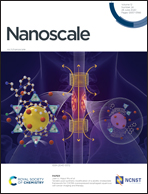A green strategy for the preparation of a honeycomb-like silicon composite with enhanced lithium storage properties†
Abstract
The high-performance silicon (Si) composite electrodes are being widely developed due to their considerable theoretical capacity. Coating with carbon-based materials is an efficient way to solve the common issues of Si-based materials. Currently, most of the reported strategies are complicated, pollutive, or uneconomic, which hamper their practical applications. Herein, a honeycomb-like Si-based composite was prepared to address these issues via a facile and green reduction approach at room temperature. The pre-anchored Si nanoparticles could be packed and interconnected through a three-dimensional graphene network to further enhance the electrochemical properties of the active materials. As an electrode, this composite shows good rate capabilities upon lithium storage and cycling stability. The continued cycling measurement delivers a −0.049% capacity decay rate per cycle within 600 cycles. A direct comparison further exhibits the obviously improved performance between the as-designed Si-based composite and naked Si, suggesting a potential application of this convenient strategy for other high-performance electrode materials.



 Please wait while we load your content...
Please wait while we load your content...